Filter by
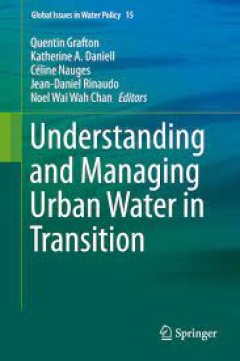
Understanding and Managing Urban Water in Transition
This book examines changes and transitions in the way water is managed in urban environments. This book originated from a joint French-Australian initiative on water and land management held in Montpellier, France. The book delivers practical insights into urban water management. It links scientific insights of researchers with the practical experiences of urban water practitioners to understan…
- Edition
- -
- ISBN/ISSN
- 978-94-017-9801-3
- Collation
- -
- Series Title
- -
- Call Number
- -
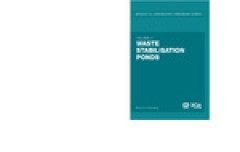
Waste Stabilisation Ponds
"Waste Stabilisation Ponds is the third volume in the series Biological Wastewater Treatment. The major variants of pond systems are fully covered, namely: facultative ponds anaerobic ponds aerated lagoons maturation ponds The book presents in a clear and informative way the main concepts, working principles, expected removal efficiencies, design criteria, design examples, construction aspects,…
- Edition
- -
- ISBN/ISSN
- 9781843391630
- Collation
- -
- Series Title
- -
- Call Number
- -

Arsenic and Fluoride Contamination: A Pakistan Perspective
This book presents an up-to-the-minute overview of arsenic and fluoride pollution of soil and groundwater in Pakistan. It includes the author’s doctoral dissertation on Lahore as a case study and describes the mechanism of pollution on the basis of the findings in that area. The book highlights the concrete situation in Pakistan – including the severity of the problem, its health effects an…
- Edition
- Ed. 1
- ISBN/ISSN
- 978-81-322-2298-9
- Collation
- XI, 147
- Series Title
- -
- Call Number
- 553.79 FAR a
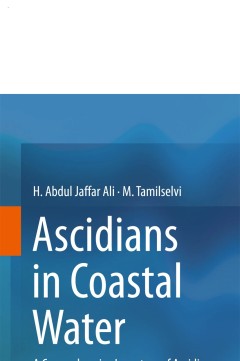
Ascidians in Coastal Water: A Comprehensive Inventory of Ascidian Fauna from …
This book addresses the needs of professional and amateur taxonomists on the subject of ascidians in Asia. This is the first book of its kind and features color illustrations done by the authors in Asia. This book provides a brief overview of ascidians in addition to both the taxonomy and distribution of ascidians along India’s southern coast. It also opens a new arena for marine researchers …
- Edition
- Ed. 1
- ISBN/ISSN
- 978-3-319-29118-5
- Collation
- XVIII, 157
- Series Title
- -
- Call Number
- 591.5 ALI a

Resilience of Water Supply in Practice: Experiences from the Frontline
Water Resilience in Practice is co-edited by two experienced water sector professionals and reviews resilience in water supply service delivery in the form of a series of case studies from different economic contexts – ranging from low-income and fragile states to upper-income countries. It documents real experiences and reflects on the initiatives different service providers apply to strengt…
- Edition
- Ed. 1
- ISBN/ISSN
- 9781789061611, 9781789061635
- Collation
- 210
- Series Title
- -
- Call Number
- 628.1 RES r

Pathways to Water Sector Decarbonization, Carbon Capture and Utilization
The water sector is in the middle of a paradigm shift from focusing on treatment and meeting discharge permit limits to integrated operation that also enables a circular water economy via water reuse, resource recovery, and system level planning and operation. While the sector has gone through different stages of such revolution, from improving energy efficiency to recovering renewable energy a…
- Edition
- -
- ISBN/ISSN
- 9781789061796
- Collation
- -
- Series Title
- -
- Call Number
- 631.7

Aquatic Microbial Ecology and Biogeochemistry: A Dual Perspective
This book highlights perspectives, insights, and data in the coupled fields of aquatic microbial ecology and biogeochemistry when viewed through the lens of collaborative duos – dual career couples. Their synergy and collaborative interactions have contributed substantially to our contemporary understanding of pattern, process and dynamics. This is thus a book by dual career couples about dua…
- Edition
- Ed. 1
- ISBN/ISSN
- 978-3-319-30259-1
- Collation
- XVII, 300
- Series Title
- -
- Call Number
- 551.48 AQU a
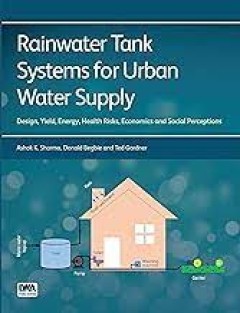
Rainwater Tank Systems for Urban Water Supply Design, Yield, Energy, Health …
Rainwater tank systems have been widely adopted across the world to provide a safe local source of water in underdeveloped rural areas, and as a substitution for mains water for non potable end uses in water stressed urban areas. They also provide flood control in monsoonal climates like Korea or in combined sewer systems like in Germany. The importance of these systems in cities has grown, as …
- Edition
- -
- ISBN/ISSN
- 9781780405360
- Collation
- -
- Series Title
- -
- Call Number
- -
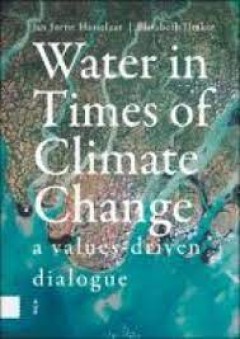
Water in Times of Climate Change A Values-driven Dialogue
This book on water and climate change goes beyond the usual and predictable analyses, by bringing religion and values into a discussion that is often dominated by technocratic solutions. The three case studies of Jakarta, Cape Town, and Amsterdam demonstrate the challenges of water management in urban areas and the role religion can play in addressing them. With representatives from science, po…
- Edition
- -
- ISBN/ISSN
- 9789048555383
- Collation
- -
- Series Title
- -
- Call Number
- -
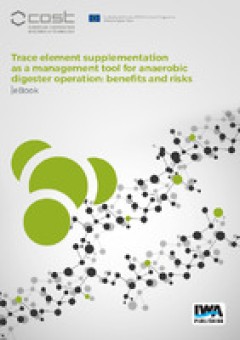
Trace element supplementation as a management tool for anaerobic digester ope…
" This guide is intended for use by industry stakeholders, decision-makers and digester operators in navigating the topic of trace element (TE) supplementation as a management tool for anaerobic digester operation. The subject is the application of TE, and supplementation regimes in anaerobic waste-conversion biotechnologies, such as biogas digesters. TE is a term used to include a wide range o…
- Edition
- -
- ISBN/ISSN
- 9781780409429
- Collation
- -
- Series Title
- -
- Call Number
- -
 Computer Science, Information & General Works
Computer Science, Information & General Works  Philosophy & Psychology
Philosophy & Psychology  Religion
Religion  Social Sciences
Social Sciences  Language
Language  Pure Science
Pure Science  Applied Sciences
Applied Sciences  Art & Recreation
Art & Recreation  Literature
Literature  History & Geography
History & Geography